Evolution of Chinese Money
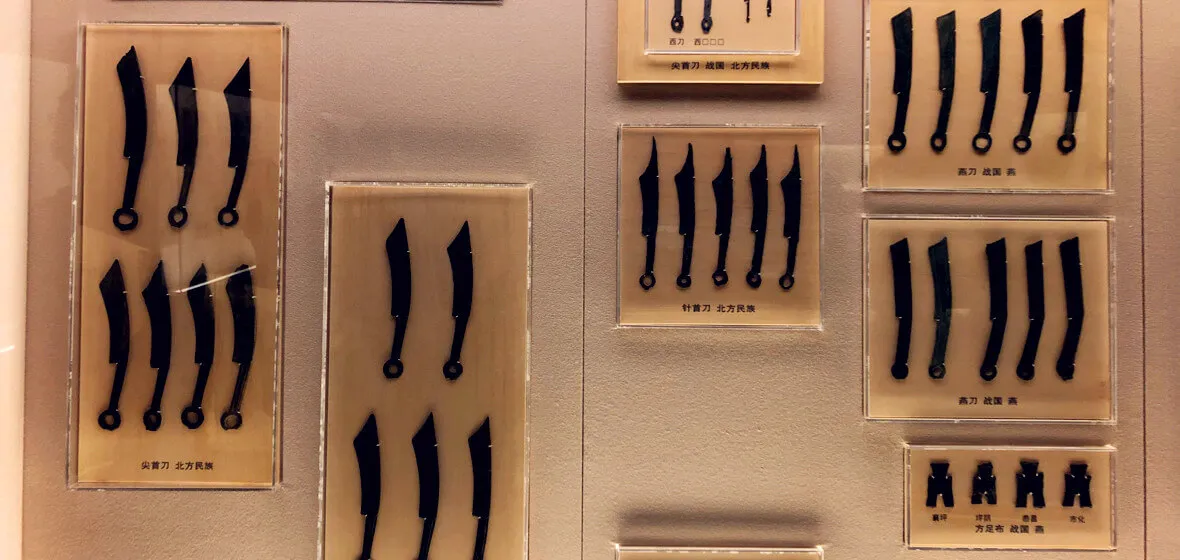
In the west, some people believe money is the root of all evil, while others think lack of money is the root of all evil. For Chinese people, “有钱能使鬼推磨” (Literally money will make the devil turn millstones). No matter what your money attitude is, everyone will agree that money holds a magnetic appeal. With the world increasingly moving to cashless and contactless payments, the use of paper money is dwindling fast. We may only find banknotes in a museum in the future. Have you ever thought about how the use of paper money came into being in the first place? Before money, people acquired and exchanged goods through bartering!
Did you know that the world’s oldest known, securely dated coin minting site was located in Guanzhuang in Henan Province dating around 640BCE was discovered by archaeologists in early August 2021?
Here, we take a look at the evolution of money in China– its origins, the ideas behind its inception, and the ups and downs of paper money.
1. c.2070 BCE-c. 1200 BCE Cowries were used as money in China
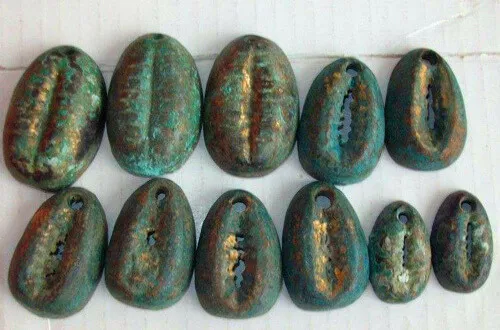 Shell Money
Shell Money
Shell money is a form of currency that was used in many parts of the world, including Asia, Africa and Oceania. This form of money was known as the cowrie shell and was used as the media of exchange in ancient China. Inscriptions on the oracle bones and the bronze vessels contain records about grants or gifts of seashells in numbers of "P'eng". "P'eng" was the basic unit of cowrie money, comprising a string of five shells or ten shells. In fact, cowrie shells are so deeply embedded into Chinese culture that many characters in the written Chinese language refer to money or trade, containing the symbol for cowrie shells: 貝.
Cowrie shells continued to be used in remote southwestern areas up to the 17th century. The cowrie shells were kept in elaborately decorated bronze containers. You can find such a bronze cowrie container dating back to the Western Han Dynasty (206 BCE- 25 BC) in Yunnan Provincial Museum in Kunming.
2. c. 1200 BCE Bronze Cowries were cast in China
Bronze cowrie shell coins are considered the first metallic coinage in Chinese history. They were initiated during the Shang Dynasty (1600 to 1046 BCE), fulfilling the shortage of nature seashells and later becoming mainstream during the Zhou Dynasty (1046-256 BCE).
3. c. 1000-500 BC Coins of different forms exist in China
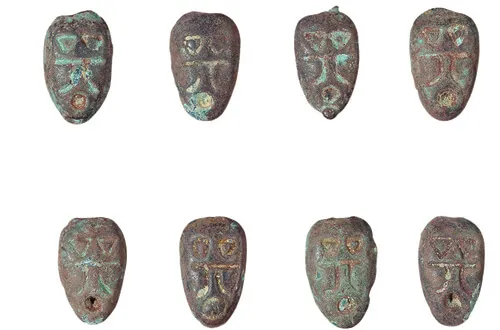 yibiqian
yibiqian
The Spring and Autumn (770BCE-476 BCE) and The Warring States (475 BCE - 221 BCE) periods was considered violent and chaotic. After hundreds of years of intense contentions over hegemony during the Spring and Autumn Period, there were seven powerful kingdoms left, plus a small central government of the Zhou Empire. Each kingdom cast their own coins. These early “coins” took on various shapes and included spade (bubi 布币), knife (daobi 刀币), ring-shaped coin (huan qian 环钱), and nose (yibiqian 蚁鼻钱) and banliang (“half-tael” 半两).
4. 221 BCE Qin dynasty Emperor Qin Shi Huang standardized money
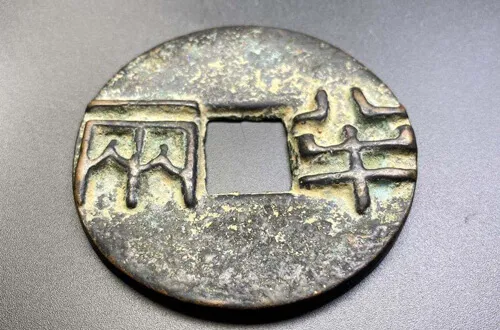 banliang coin
banliang coin
Emperor Qin Shi Huang had unified all of China in 221 BC. To make it easier for people to do business and government officials to collect taxes, he standardized the coinage system, along with everything else, when he introduced the banliang “half tael” (about 8 grams) coin. It had a standard weight in the form of a round disc with a square hole. This shape of the coin remained in circulation up to the 20th century. Why did the Chinese people choose this shape for their money? The reason is that the ancient Chinese believed that the earth was square and heaven was round. It was also for a practical reason: several coins could be strung together on a rope and a bunch of coins was created – this was done to make it easier for the owner to carry the coins when moving around.
5. 119 BCE Leather money was issued in China
The Chinese Emperor Wudi (reigned 141–87 BCE) created currency out of skins from his personal collection of white stags. It was fringed and decorated with elaborate designs. These consisted of pieces of white deerskin, about one foot square, with a value of 400,000 copper coins. The princes, when they came to pay their respect to the Throne, were compelled to buy one of these pieces of skin for cash, and present their gifts to the Emperor upon it.
6. 118 BCE the Wuzhu coins were cast
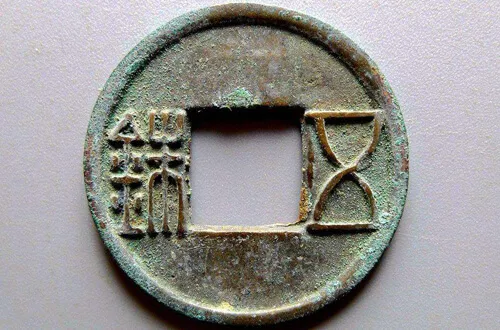 the Wuzhu Coin
the Wuzhu Coin
The Han Empire was divided into areas directly controlled by the central government, and several semi-autonomous kingdoms. Each kingdom cast their own coins; gradually some kingdoms were rich enough to challenge the central government, the imperial court enacted a series of reforms to limit the size and power of these kingdoms. One of the reforms was the establishment of the royal mint. In 118 BCE, the Han Emperor Wudi (reigned 141–87 BCE) cast a new, standardized coin: the Wuzhu coin. “Wu” means five, “Zhu” a weight unit (equal to 0.673 gram). The coin weighed “5 Zhu” (about 3.5 grams). The Wuzhu coin remained in use long after the decline of the Han dynasty: in fact, for almost eight centuries! All coins in later times resembled the Wuzhu coin to a certain degree in size and shape. It was the typical form of a Chinese coin.
7. 621 CE Kaiyuan Tongbao coins were cast
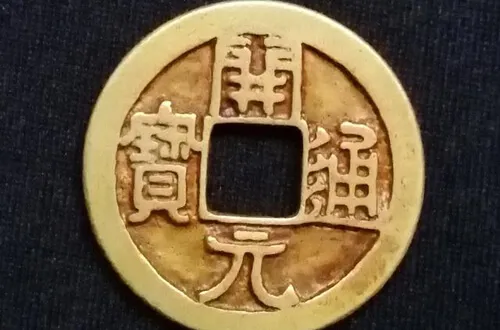 Kaiyuan Tongbao
Kaiyuan Tongbao
Tang dynasty cash coin was produced from 621 under the reign of Emperor Gaozu and remained in production for most of the Tang dynasty until 907. Notably, the first cash coin to use the inscription tōng bǎo and an era title as opposed to having an inscription based on the weight of the coin as was the case with Ban Liang, Wu Zhu and many other earlier types of Chinese cash coins. Tongbao literally means “circulating currency”. The Kaiyuan Tongbao inscription inspired coins in other Asian countries like Japan, Korea and Vietnam. The last coins bearing the “Tongbao” inscription was cast in the 1940s in French Indochina (nowadays Vietnam, Laos, and Cambodia).
8. 1023 CE Paper Money was first printed in Chengdu, southwestern Sichuan Province
Around 960CE, there was a shortage of copper from which coins were made, so the government cast iron coins, but they were too heavy for use. A bolt of cloth will cost about 65kg of iron coins! The government licensed specific deposit shops where people could leave their coins and receive promissory notes. In the 1100s, Song authorities decided to take direct control of this system, issuing the world's first proper, government-produced paper money. This money was called jiaozi. While paper money was certainly easier to carry in large amounts, using paper money had its risks: counterfeiting and inflation. In order to discourage counterfeiting, Jiaozi was stamped with multiple banknote seals, using special colors derived from different plants and fibers. Each note carried a warning that counterfeiters would be decapitated.
9. Paper money was widely used in Yuan Dynasty (1271-1368 CE)
Though paper notes were first issued by in the Song dynasty it was not the primary medium until the Yuan dynasty came to power. The paper currency issued during the reign of Kublai Khan (the first Emperor of the Yuan dynasty, grandson of Genghis Khan), was referred to as Chao. Yuan dynasty banknotes are the earliest known fiat money. They are inconvertible paper money made legal tender by a government decree.
10. 1375- 1450 Paper money Daming Tongxing Baochao was printed and China abandoned paper money
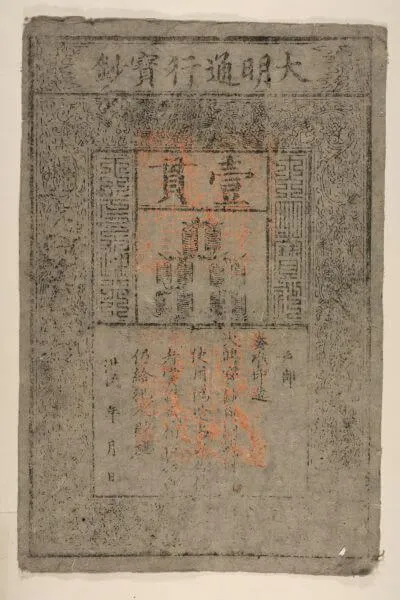 Daming Tongxing Baochao
Daming Tongxing Baochao
Like its predecessor the Yuan Dynasty, the Ming Dynasty also printed paper money. The Daming Tongxing Baochao (the general banknote of the Great Ming) was the only paper currency in the Ming dynasty. But like its forebears, the paper currency experienced massive counterfeiting and hyper-inflation. In 1425, Ming notes were trading at about 0.014% of their original value under the Hongwu Emperor (reigned 1368–1398). The notes remained in circulation as late as 1573, but their printing ceased in 1450. With the collapse of the paper currency system, copper coins were in circulation again. China used bimetallic currency, meaning that both copper and silver were in circulation. Copper coins were used for everyday transactions, and silver was used for larger transactions and for paying taxes to the government.
11. 1529 Silver became a fiat currency in China
In the Ming dynasty, an increased supply of silver reached China from Mexico and South America through trade with the Spaniards, and the Spanish Peso was accepted as currency in ports engaged in foreign trade. In 1529, silver became a fiat currency in China. You may wonder why the Chinese government did not mint silver coins, the main reason was that China had very little silver. As their purity and exact weight varied, they were treated as bullion and measured in tael.
12. Since the early 18th century, Mexican Silver Dollars (Eagle Dollar) Circulated in China
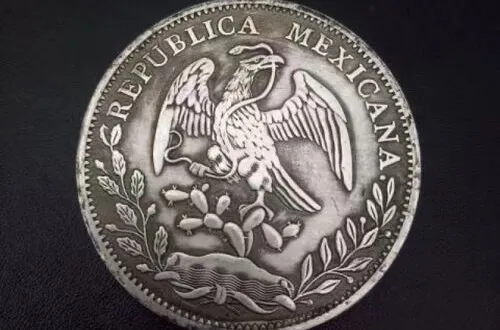 Mexican Silver Dollars
Mexican Silver Dollars
From 1500 to 1800, Mexico and Peru produced something like 85 per cent of the world's silver. During that same period, at least a third of all that silver eventually wound up in China. The Europeans used silver to obtain goods, such as silk, porcelain, and later tea from China. As early as the 1720s, Mexican silver dollars were used in transactions in Southern China. Mexican silver had the advantage of already being in coin form and being reliable for its weight in silver, so that one did not have to go to a money changer to have him weigh the silver and take a fee for attaching a certificate. In a 1910 survey conducted by the Ministry of Finance of the Qing dynasty, there were about 360 million Mexican silver dollars circulated in China.
13. 1948 the Renminbi was first issued by the People's Bank of China.
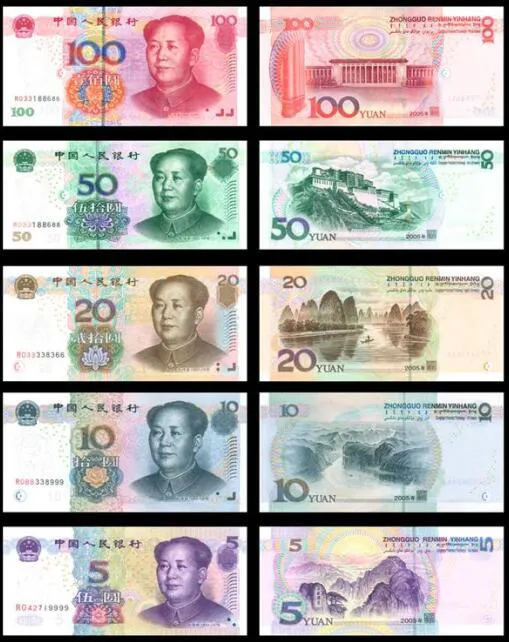
Renminbi “people’s currency”, the official abbreviation is CNY, also commonly abbreviated as "RMB" or "Yuan" is the current legal tender of the People's Republic of China.
The official Renminbi was first issued during the Chinese civil war in December 1948, after the establishment of the People’s Bank of China (PBOC) in Shijiazhuang city, Hebei province. It is essential to know more about Renminbi if you plan to travel to China. Learn more about the Renminbi here.
14. 2014, The Central bank digital currency (CBDC) task force was formed by the People’s Bank of China (PBOC)
Distribution of the digital currency will be conducted via a two-tier system. The PBOC will distribute the digital yuan to commercial banks. Commercial banks will be responsible for getting the currency into the hands of consumers. This could include services to allow consumers to exchange their coins and cash for digital yuan. In 2019, China had already given away millions of dollars worth of digital currency in real-world trials in several cities including Shenzhen, Chengdu and Suzhou.
The Top 4 Numismatic Museums in China
During your trip to China, you can include one of the numismatic museums in your tour. We have listed 4 recommended museums in Beijing, Shanghai and Xi’an for you:
1. Ancient Chinese Currency Gallery in National Museum of China
This exhibition shows more than 1,800 treasures from the NMC’s collection of more than 200,000 Chinese currency artefacts.
2. China Numismatic Museum in Beijing
This museum exhibits Chinese currencies through the ages, from shell money, spade-shaped coins to the most recent coins.
3. The Chinese Currency Gallery In Shanghai Museum
It exhibits more than 3,300 pieces of ancient Chinese metal coins and paper money in a space of 740 square meters, providing a historical overview of the origin and development of Chinese currencies as well as the economic and cultural exchanges between China and the rest of the world. You can also find ancient Silk Road coins donated by a private collector.
4. Xian Numismatic Museum
The coin museum was established by the Xian Branch of the People’s Bank of China (PBOC). More than 5,000 coins, paper currency and other forms of ancient and modern money are on display.

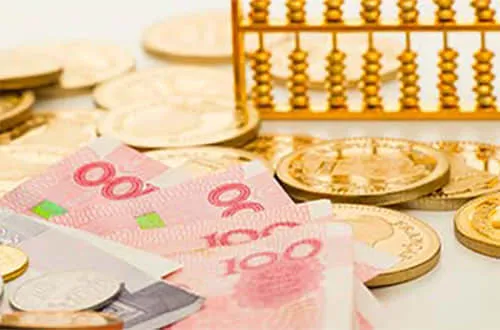 Chinese Money
Chinese Money 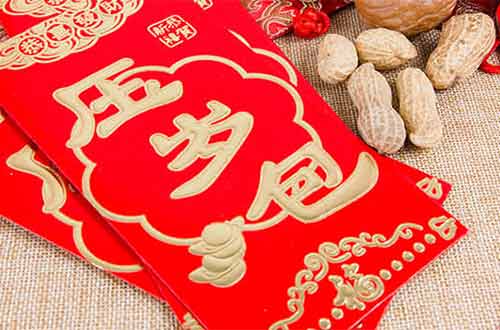 Red Envelopes: Hong Bao
Red Envelopes: Hong Bao  How do You Cross the Street in China?
How do You Cross the Street in China?  Chinese Business Etiquette
Chinese Business Etiquette